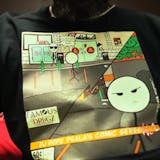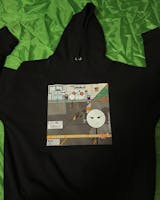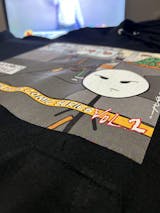With the recent boom in the printing industry, new printing techniques have emerged. The growth of this industry accelerated even more with the DTF transfer technique. Because this printing technique has been adopted by many printing companies because it produces fast and high quality printing. DTF, a new generation printing technique, is also called direct-to-film transfer. It enables the production of many prints, regardless of the wide color scale and complex patterns. When DTF printer, film and inks come together, the results are economical, simple and high quality.
What is DTF Printing?
DTF printing is the process of direct printing on fabric or any other material using specialized equipment. It is different from other printing techniques as it uses special PET film and DTF inks. The process involves transferring the design on the PET film to the fabric with a heat press machine. In addition to being a durable technique, the designs are high resolution and vivid.
How Does the DTF Printing Process Work?
DTF transfer, which is quite fast compared to other printing methods, works efficiently. It is of high quality because it provides high-resolution printing on outdoor clothing. Let's take a more detailed look at how this printing technique works:
- In the first stage, film and powder adhesive are prepared. After preparation, the DTF is placed on the printing machine.
- After forming the first layer, the white layer is printed to cover the surface of the first layer.
- After the powder adhesive is applied on the wet ink, the powder is removed. The film is then heated for application to the fabric. The heating is done in a curing oven or with a heat press machine.
- The second stage involves pre-printing the fabric and applying the heat press. In this process, the PET film is preheated. It is kept under heat for 2-5 seconds in the press machine to dehumidify the fabric.
- After flattening, the film is placed on the pressed fabric. The print is transferred from the film to the fabric with 15 to 20 degrees of heat and time at 165°C.
- The last step is to peel the film and then print.
- After the design is transferred to the fabric, the cooled film needs to be peeled off.
- The design is once again heat pressed and flattened to make it durable. After this process, the cooled film is peeled off and the garment is packaged.
Comparison of DTF Printing with Other Methods
There are many printing methods to choose from in the printing industry. However, if long-term results are desired, quality and efficient printing techniques should be preferred. In particular, DTF printing can offer many advantages compared to other printing techniques. First of all, this printing technique can give better results than DTG, sublimation and screen printing. However, you should pay attention to the fabrics you use for good results.
Is There an Easy and Advantageous Alternative to DTF Printing?
If you don't have the budget to buy a DTF printing machine, you can resort to a cheap method. This method will give you the same DTF printing output. You can use heat transfer vinyl, dark transfer paper and sublimation printing.
How Long Do DTF Prints Last?
DTF prints last a long time when printed correctly. They can last for 1 year when proper washing instructions are followed. This period can also extend beyond 1 year.
What are the Pros of DTF Transfer?
DTF transfer is a printing technique for light and dark colors. It can also be applied on many printing fabrics such as rayon, cotton and polyester. Many decorators say that this printing technique is easy to apply. Because it does not require pre-treatment and sorting.








